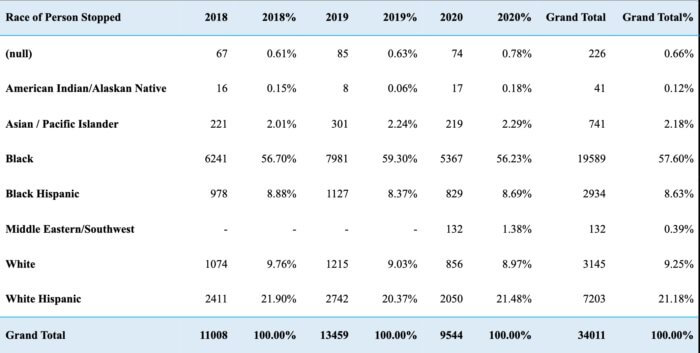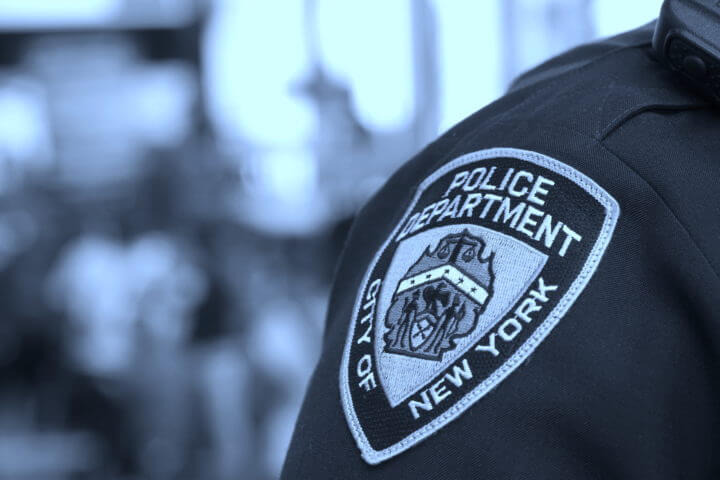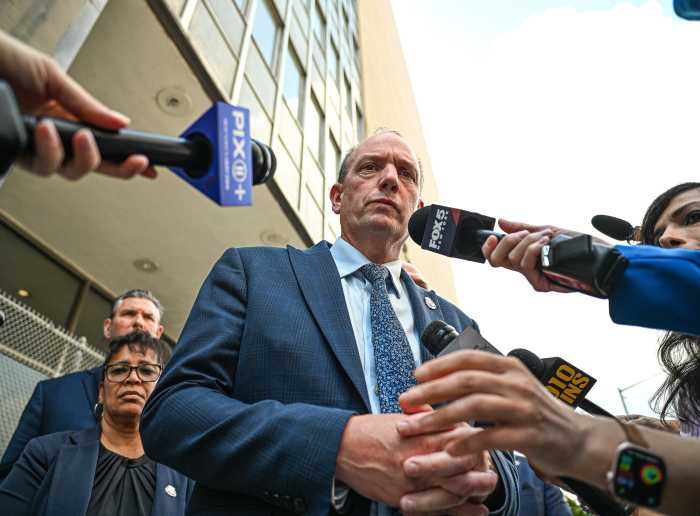New Yorkers of color made up 91% of all reported stop-and-frisks by the Police Department in 2020, a slight uptick compared to the years before, according to an analysis of NYPD data by the Legal Aid Society.
“This latest data from the NYPD shows that not enough has changed with the way the NYPD interacts with New Yorkers of color since the Mayor claims to have ended stop-and-frisk,” said Molly Griffard, a legal fellow with the Legal Aid Society’s Cop Accountability Project.
Black New Yorkers had the largest share of stops at 56.23%, despite making up 24.3% of the population, while white residents, who make up 42.7% of the city, accounted for 8.97% of the controversial search procedures.

The NYPD’s category “white Hispanic” accounted for 21.48%, below the proportion of Hispanic or Latino New Yorkers who live in the city at 29.1%, according to US Census figures.
While the absolute number of stop-and-frisks decreased sharply from 13,459 in 2019 to 9544 in 2020 — which the Legal Aid Society attributes to the COVID-19 pandemic — the percentage of people of color subjected to the procedure grew slightly over the past years from 90.97% to 91.03%.
The majority of stops happened in poorer neighborhoods, such as the 75th Precinct in East New York, Brooklyn, which also has the distinction of having been the most-sued precinct in the entire city.

In order to make a legal stop, police must have a reasonable suspicion that the person is committing, has committed, or is about to commit a crime. If an officer reasonably believes the person to have a weapon they can pat down, or frisk, their outer clothing.
The street-stop policy, which ballooned to a high of 685,000 stops in 2011 under then-Mayor Michael Bloomberg and targeted mainly Black and Latino New Yorkers, plummeted under Mayor Bill de Blasio, but the racial disparities remain.
The NYPD has also been under a federal monitor for eight years due to the policy, which was ruled unconstitutional in 2013.
The overwhelming majority of stops last year also failed to produce a firearm (94.56%), knife/cutter (94.09%) or other weapon (98.13%), according to the Legal Aid Society’s study.
“The numbers show clearly that the NYPD continues to use stop-and-frisk, that it is still being carried out in a racially discriminatory manner, and that it remains highly ineffective at furthering public safety,” Griffard said. “New Yorkers deserve better; it’s past time the NYPD actually ended stop-and-frisk.”

An NYPD spokeswoman said the Department works to reduce its number of stop-and-frisk encounter, a trend that continues into the first quarter of 2021, while touting an increase of cops collaring people with guns, with arrests through May rising to 1,917 compared with 1,497 in the same period a year ago, a 28% increase.
“With its innovative enforcement paradigms, the NYPD will continue using its intelligence-driven approach to focus on areas experiencing disproportionate violence and ensure the kind of constitutional, biased-free policing that is foundational to building community trust and maintaining public safety,” said Detective Sophia Mason in a statement.
Read more: Bronx Double Homicide Suspect Arrested




































